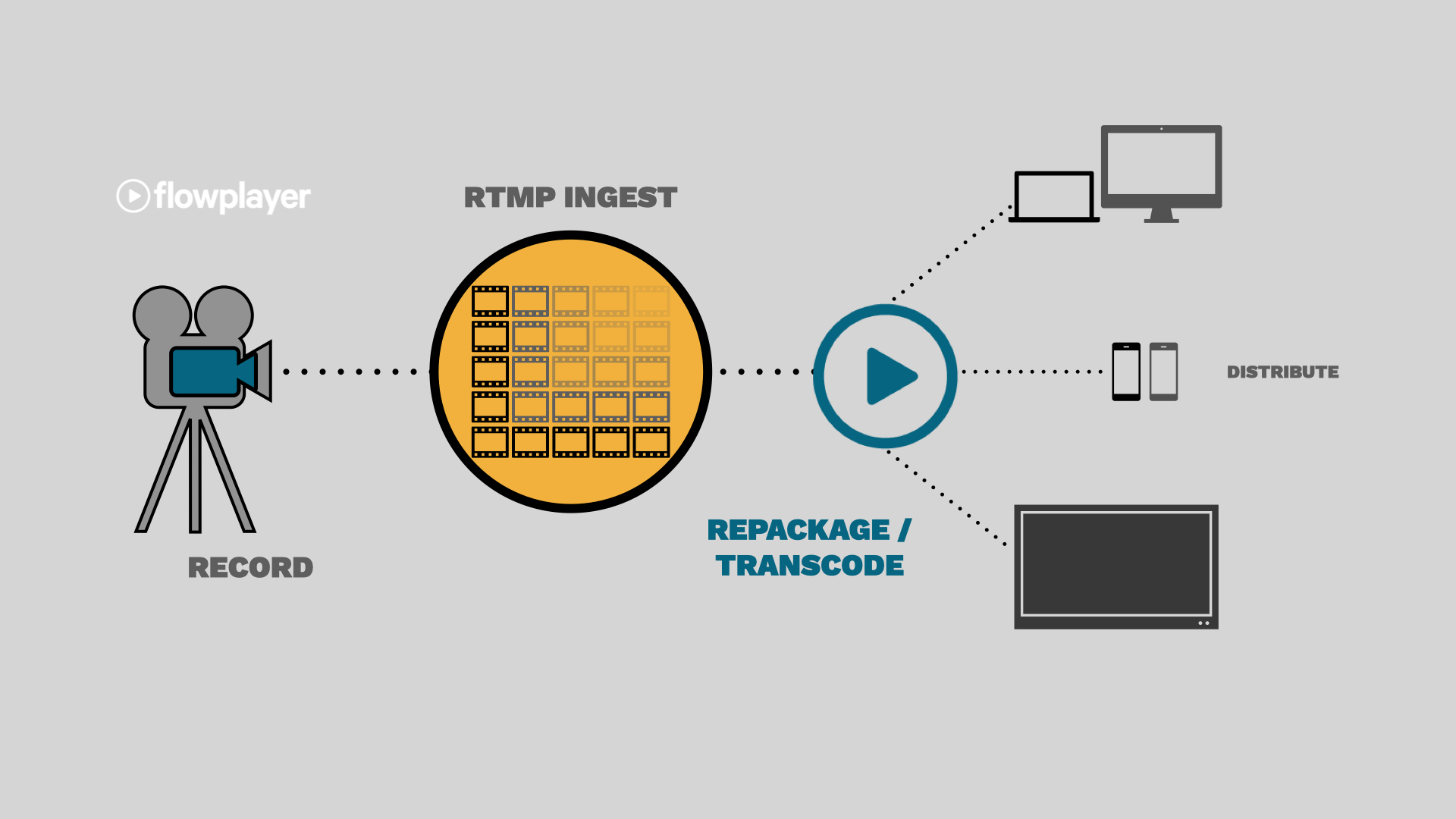What is an RTMP server?
By Omar Santos
Before we define RTMP let us look at what the letters stand for, RTMP = Real-Time-Messaging– and the P in RTMP stands for protocol, A streaming protocol is a method of transferring data from one screen to another over the internet.
RTMP streaming is a live streaming protocol that offers high-performance transmission of audio, video, and data from an encoder to a server that distributes the signal over the internet.
It can also be defined as an application-level protocol designed for delivering on-demand media and live media over the internet between a Flash player and RTMP Media Server.
How does it work?
First digital audio and video signals go from a camera to an encoder –> Then the encoder compresses and pushes the data to a streaming media server –> The streaming media server then manages and sends the data to a multitude of players and browsers around the world.
How to set up an RTMP server for streaming video
Step-1 connect video signals to an encoder
The first thing to do is connect the video signal to the RTMP hardware or software encoder. Connect your camera cord to the encoder SDI/HDMI cable unit if you’re using a hardware encoder. Also, some encoders connect to cameras via Wi-Fi. If you have such an encoder, all you need to do is to sync the RTMP hardware with your camera signal.
Step-2 create a new live stream in your RTMP server
Step-3 setup your encoding options in your Online video platform(OVP)
Step-4 enable RTMP delivery by setting the RTMP URL
Step-5 enable your stream name and RTMP URL in your encoder under the RTMP configuration settings
Step-6 test your live stream
Step-7 start streaming
The best RTMP servers for live streaming
Ant media server
Gives a free RTMP server and supports various protocols including RTSP, HLS, CMAF, SRT, and more.
Castr
Streaming server software to stream high-quality, low-latency RTMP live video streams anywhere in the world.
Red5server
Red5server uses the Wowza streaming engine as the best stable option for an RTMP server. It allows live streaming on mobile devices both apple and android.
Create an Online TV Channel
Another interesting use for Red5Server is the option to start TV channels, you can upload videos in mp4 format, organize playlists with time schedule and run a TV station. This same option could be just an On-demand streaming, but with the TV channel or as they call it, TV Station, you upload and stream your videos, BUT at any time, just go live, click on start streaming and you stream live. When the live streaming is finished, the system will go back to your playlist. I think this option is very cool.

RTMP vs HLS
HLS and RTMP are well-known protocols for streaming media content. HLS stands for HTTP live streaming and it is the application layer protocol. RTMP stands for real-time media protocol and it’s the transport layer protocol. The idea of HLS is to stream media over the HTTP protocol, whereas RTMP streams media over TCP or UDP protocols. There’s one variance of the RTMP – RTMPT, which is the application-level protocol, which runs over HTTP.
RTMP offers low-latency streaming with minimal buffering. But unfortunately, RTMP relies on the same Adobe Flash that was mentioned a few paragraphs above. As a result, this tool is no longer supported on web browsers or mobile devices. However, that doesn’t mean RTMP is no longer beneficial. Using RTMP remains vital since it can be transcoded into other formats like HLS, which may be distributed more efficiently.
HLS streaming offers more flexibility and safety, and performances are much more reliable than previous technologies.
The adoption of HLS has been swift because of its easy transmission and compatibility. It is supported on desktop browsers, smart TVs, and mobile devices, including Android and iOS. Its biggest drawback is latency, although there are methods to reduce HLS latency.
Let’s look at the pros and cons of both RTMP and HLS
RTMP Pros:
1. The actual installation process of a Flash Media Server is simple, effective and appears to be trustworthy since the protocol was established 10 years back.
2. RTMP has an exceptional feature where it provides low latency while transmitting live broadcasts.
3. The protocol has the potentiality to transmit audio and video on any formats and rendition.
4. It also supported universally due to its effectiveness in implementing for live streaming.RTMP Cons:
1. It does not have native support in iOS.
2. RTMP does not work in HTML5, it differs from the HTTP Protocol.
3. The security of delivering video is minimal.HTTP Pros:
1. HLS is a pocket-friendly protocol which is Compatible on all the platforms and supports HTML5 video player.
2. Helps to stream to reach more viewers and also the safest protocol to scale up the content to a massive base audience.
3. The biggest advantage of HLS is that it has the potentiality to deliver adaptive bitrate streaming where the quality of the content to be expected at a high pixel-rate.HTTP Cons:
1. HLS has latency which is relatively high when compared to RTMP.
2. The performance of HLS on other platforms is minimal when compared to the performance on iOS only.Can RTMP servers stream audio only?
Yes, they can. you can select the audio-only setting on the settings icon on live stream and then click quality, then you can choose the option audio-only.

